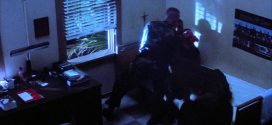Let’s start with a question that movie buffs would love: Name the Hollywood movie starring Brad Pitt and Danny Denzongpa? Yes, this is not a make-believe question – it was in year 1997 and the film was called Seven Years in Tibet.
| Movie | : | Seven Years in Tibet |
| Director | : |
Jean-Jacques Annaud
|
| Produced by | : | Jean-Jacques Annaud, Iain Smith, John H. Williams |
| Screenplay by | : | Becky Johnston |
| Based On | : | Seven Years in Tibet by Heinrich Harrer |
| Music By | : | John Williams |
| Editor | : | Noëlle Boisson |
| Cinematography | : | Robert Fraisse |
| Production company | : | Mandalay Pictures |
| Distributed by | : | TriStar Pictures, Entertainment Film Distributors |
| Released On | : | October 8, 1997 (United States), November 21, 1997 (United Kingdom) |
| Starring | : | Brad Pitt (Heinrich Harrer), David Thewlis (Peter Aufschnaiter), B.D. Wong (Ngawang Jigme), Mako (Kungo Tsarong), Danny Denzongpa (Regent), Victor Wong (Chinese ‘Amban’), Ingeborga Dapkūnaitė (Ingrid Harrer), Jamyang Jamtsho Wangchuk (Dalai Lama Tenzin Gyatso, 14 years old), Sonam Wangchuk (Dalai Lama Tenzin Gyatso, 8 years old), Dorjee Tsering (Dalai Lama Tenzin Gyatso, 4 years old), Lhakpa Tsamchoe (Pema Lhaki), Jetsun Pema (The Great Mother), Ama Ashe Dongtse (Tashi), Ric Young (General Chang Jing Wu), Ven. Ngawang Chojor (Lord Chamberlain), and others… |
| Purchase Link(s) | : |
Movie: Buy – Seven Years in Tibet Movie from Amazon.com Book: Buy – Seven Years in Tibet Book from Amazon.com Buy – Seven Years in Tibet Book from Amazon.com Buy – Seven Years in Tibet Book from Amazon India |
Largely anticipated as the story of Dalai Lama, this American-French drama had mixed response from the public and critics because it did not focus on the Dalai Lama’s life. Instead, it tells the story of Austrian mountaineer Heinrich Harrer. The script is based on Heinrich Harrer’s memoirs published in a book by same name outlining his journey and experience in the Himalayas from 1944 to 1950.
It is World War II era and we meet Heinrich Harrer (played by Brad Pitt), a Nazi officer, setting out on a journey to conquer Nanga Parbat for the glory of his nation. He comes across as arrogant, insensitive and self-centered man who doesn’t mind leaving his pregnant wife behind when he sets out on this mission. He is not a team person and we see this during the first phase of the film when he clashes with the leader of expedition – Peter Aufschnaiter (Played by David Thewlis, fame Eclipse, Remus Lupin in Harry Potter series). Due to an avalanche, the team has to abort the climbing and they end up in British territory of India. Being German nationals, they end up in Dehradun Prison Camp.
Harrer repeatedly tries to escape the prison camp and fails, each attempt making life more difficult for his fellow camp members. He also learns that his wife has divorced him. As much as he may torment himself, there are no ties now inspiring him to go back to Europe immediately. He finally joins hands with Aufschnaiter and others and together they manage to escape to Tibet. They spend years in this wilderness battling nature and humans, until by some lying and cunning they manage to get to Lhasa, in spite of the Dalai Lama’s orders forbidding foreigners from entering his capital.
The wanderers find refuge in home of Kungo Tsarong and slowly start to learn about the way of life in Tibet. They meet a beautiful Tibetan seamstress called Pema Lhaki here and fall for her. Both Aufschnaiter and Harrer compete for her attention for a while, but Aufschnaiter wins her affection and gets married to her. He has now no reason to go back and Harrer sticks around as well, even though the world war is over. Understandably, life will not be very easy for a former Nazi official in aftermath of Germany’s defeat.
It is now that we meet 13 year old Dalai Lama, the spiritual leader of Tibetans, played flawlessly by Jamyang Wang Chuck and his regent played by Danny. The Dalai Lama engages Harrer as his tutor in his quest to learn everything possible about western civilisation. This is the most touching part of the film as an arrogant, self-centrered officer/mountaineer learns filial love and undergoes a spiritual transformation through his interactions with a child who has been carrying out tremendously large responsibilities for his age. Harrer learns that age, race and religion are only consequential elements to the spirit that drives the person.
But the exquisitely divine and breathtaking paradise of Tibet is on verge of an unprecedented turmoil. The Chinese are invading Tibet and like every other kingdom, Tibet has got a few unsatisfied, disloyal citizens who end up helping China in the legendary massacre at Takster on Tibetan border. The Chinese officials do come to Lhasa for negotiations, but they do not take the trouble to hide their contempt for the Dalai Lama. In true communist spirit, they declare “Religion is Poison” and are not ashamed of the butchery carried out by their well-trained corps on unprepared Tibetan forces. With the arms supply gone, the Tibetan guerrillas have no hope of even holding the mountain passes and soon Tibet is under Chinese occupation.
Harrer pays his final visit to the 15 year old Dalai Lama, and says goodbye to Tibet to return to his homeland of Austira. The film takes us through his life as he mends his relationship with his son and continues his friendship with Dalai Lama.
As any other film adaptation of a book, it veers a lot from the original story every now and then, mainly because of the 40 odd years that separate the book from the film. The film has definite anti-Nazi and anti-Chinese tone and it represents the whole Chinese invasion out of sequence. This may also have been fuelled by the fact that the Chinese government did not permit the shooting of this film in the Himalayas. The amazing cinematography and awesome locales are actually showing Andean mountains.
The absolutely stunning visuals and the contrast between the East and the West in terms of culture and perceptions are probably the strongest points of this film. You can hear Hindi dialog in background mingled with some Nepalese. As mentioned before, people expected this film to tell the story of Dalai Lama, but the film is the journey of Harrer, physical, emotional as well as spiritual. We witness his transformation step-by-step as he earns friendship, learns to love other human beings and discovers himself. The Harrer that leaves Tibet is much more humbled and better human being than the Harrer that entered the Himalayas.
This beautiful film is not worth giving a miss…..
Enjoy….
Book: “http://en.wikipedia.org/wiki/Seven_Years_in_Tibet
Movie: http://en.wikipedia.org/wiki/Seven_Years_in_Tibet_%281997_film%29
Movie:
Buy – Seven Years in Tibet Movie from Amazon.com
Book:
Buy – Seven Years in Tibet Book from Amazon.com
Buy – Seven Years in Tibet Book from Amazon.com
Buy – Seven Years in Tibet Book from Amazon India
Did you watch this movie? Which part of the movie you like the best? What is the most effective scene of the movie according to you? Is there anything you want to share about this movie or this article? Do not hesitate, go ahead and leave your comments below. And yes, do not forget to share this article with your friends over various social networks via Twitter, Facebook, Google Plus and others. And yes, you may like to subscribe to our RSS feeds and follow us on various Social networks to get latest updates for the site to land right in your mail box.
 ThinkerViews – Views And Reviews Personal views and reviews for books, magazines, tv serials, movies, websites, technical stuff and more.
ThinkerViews – Views And Reviews Personal views and reviews for books, magazines, tv serials, movies, websites, technical stuff and more.



